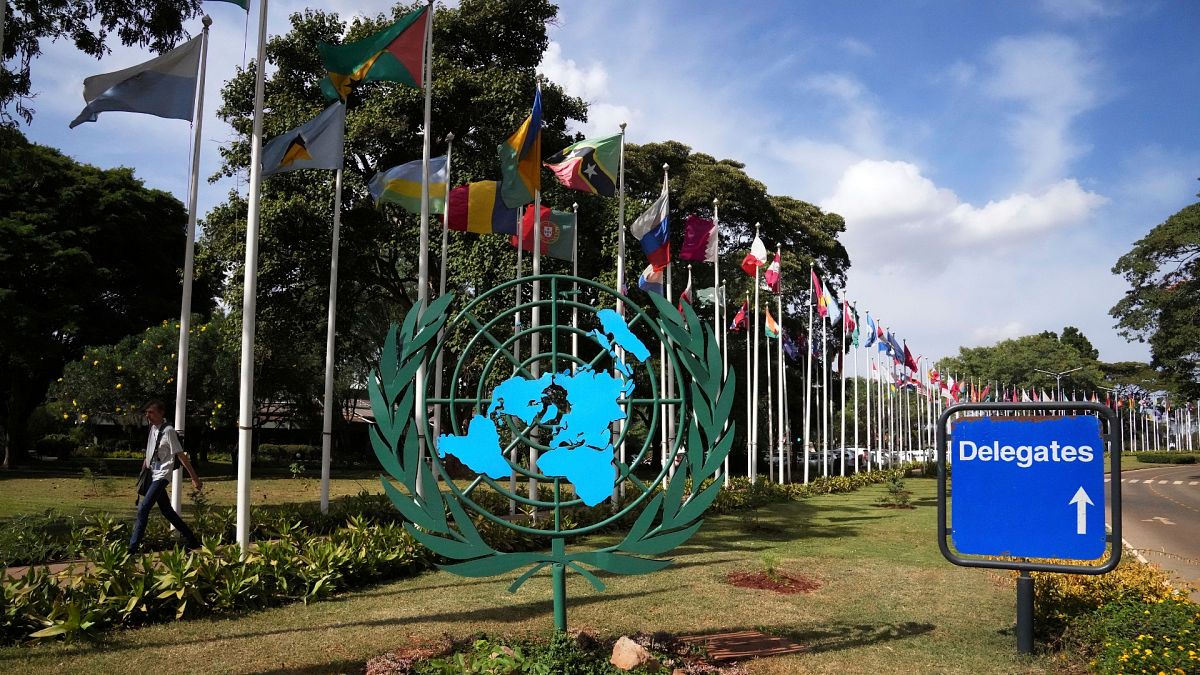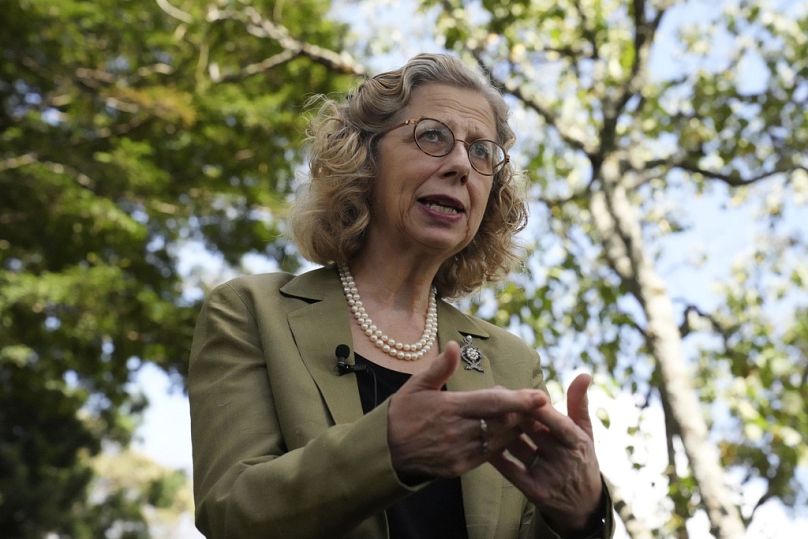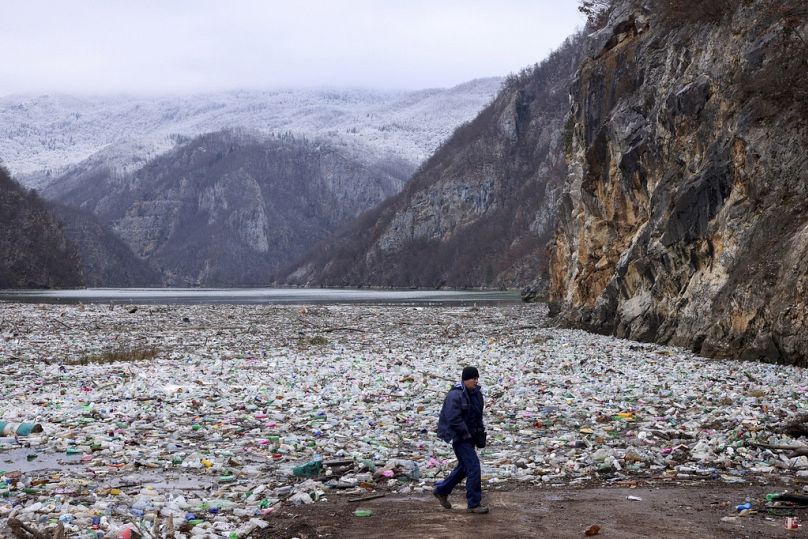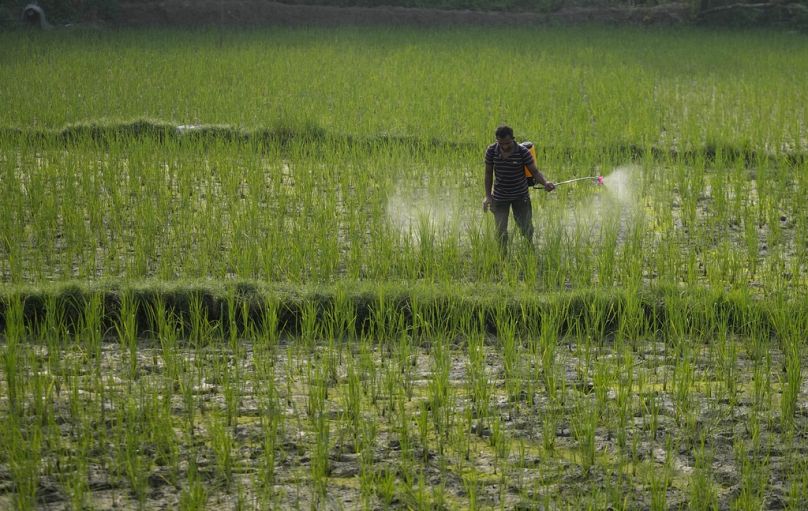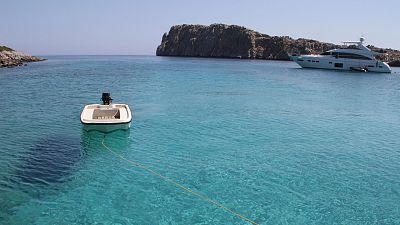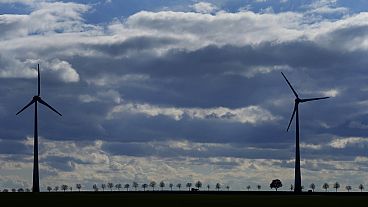Every two years, all 193 UN Member States come together to address critical environmental issues facing the planet.
The world’s top environmental decision-making body is meeting in Kenya's capital on Monday to discuss how countries can work together to tackle environmental crises like climate change, pollution and loss of biodiversity.
The meeting in Nairobi is the sixth session of the United Nations Environment Assembly, and governments, civil society groups, scientists and the private sector are attending.
“None of us live on an island. We live on planet Earth, and we are all connected,” Inger Andersen, executive director of the UN Environment Programme, which is leading the process, told The Associated Press ahead of the talks.
“The only way we can solve some of these problems is by talking together.”
What is the UNEA-6 and why does it matter?
Every two years, all 193 UN Member States come together to address critical environmental issues facing the planet collectively. It was set up as a sort of 'world parliament on the environment'.
At the meeting, member states discuss a raft of draft resolutions on a range of issues that the assembly adopts upon consensus. If a proposal is adopted, it sets the stage for countries to implement what’s been agreed on.
In the last round of talks in 2022, also in Nairobi, governments adopted 14 resolutions, including creating a legally binding instrument to end plastic pollution globally. Andersen described it then as the most significant environmental multilateral deal since the Paris Agreement to limit global warming.
For this year’s talks, countries have submitted 20 draft resolutions for discussion, including on how best to restore degraded lands, combat dust storms and reduce the environmental impact of metal and mineral mining.
But with countries having different priorities, it’s often hard to get consensus on the draft resolutions. However, Andersen said, there’s generally “a forward movement” on all draft resolutions for this year's meeting, known as UNEA-6.
With this meeting's focus on multilateralism, UNEP wants to build on past agreements it led between governments, such as the Minamata Convention to put controls on mercury and the Montreal Protocol to heal the hole in the ozone layer, Andersen said.
What are the EU's main priorities?
The EU is pushing for cooperation on the circular economy, water resilience and ocean protection at this meeting.
"At UNEA 6, we need to demonstrate the unity and leadership the world needs to address the triple planetary emergency," Commissioner Virginijus Sinkevičius said, speaking ahead of the assembly.
"Biodiversity loss is weakening our economies and undermining the well-being of billions of people. Pollution is now taking nine million lives every year.
"And for entire nations, the rising sea levels, droughts and floods are becoming an existential risk. We need a radical change in our relationship with the planet."
It has proposed three resolutions for adoption on promoting the transition to the circular economy, water security and water resilience and developing a global agenda for ocean protection.
Tackling highly hazardous pesticides
Björn Beeler, international coordinator for the International Pollutants Elimination Network, thinks there'll be slow progress on more complex issues such as financing around chemicals and waste.
Beeler also expects strong opposition on a draft resolution that wants to phase out the use of highly hazardous pesticides. The draft resolution, which was submitted by Ethiopia and is co-sponsored by Uruguay, aims to create a global alliance of UN bodies like UNEP, the World Health Organisation and the International Labor Organisation.
“If this does go through, it would be very significant because it would be the first time ever to see global movement on highly hazardous pesticides,” said Beeler, who is attending the talks.
UNEP anticipates more than 70 government ministers and 3,000 delegates at the talks.
“What we should expect at UNEA-6 is decision makers looking into the horizon, being aware of what is it that’s coming to us that could potentially damage our planet, and taking preemptive action to prevent this,” said Andersen.
